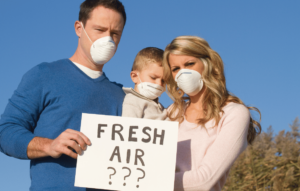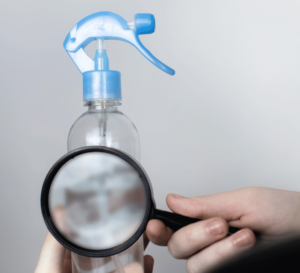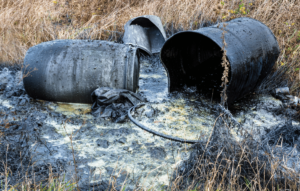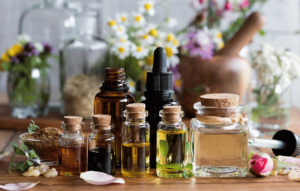Air fresheners are in countless homes, cars, and offices worldwide. Marketed with claims of freshness and cleanliness, these products promise to mask unpleasant odors and create a “welcoming environment”.
What most people don’t realize is that most air fresheners are actually doing more harm than good. Hidden chemicals and volatile organic compounds (VOCs) in air fresheners have been linked to some serious health risks. Here we’ll dive into the dangers lurking in these everyday products and explore some safer alternatives.
What’s Really Inside Air Fresheners?
Air fresheners come in many forms – plug-ins, sprays, gels, and diffusers – and are often composed of a variety of chemicals designed to disperse some sort of fragrance. However, these ingredients aren’t always as benign as they seem. Many air fresheners contain a cocktail of potentially harmful substances:
- Volatile Organic Compounds (VOCs): VOCs are chemicals that evaporate easily into the air. Common in air fresheners, VOCs include substances like benzene, acetone, and toluene, which can irritate the respiratory system.
- Phthalates: These chemicals, often found in fragrances, can disrupt hormones by interfering with the endocrine system. Prolonged exposure to phthalates has been associated with reproductive issues, especially in males.

- Formaldehyde: A known carcinogen, formaldehyde is sometimes used as a preservative or stabilizer in air fresheners. Long-term exposure can increase the risk of cancer.
- Fragrance: The term “fragrance” can encompass hundreds of undisclosed chemicals, as companies are not required to disclose these ingredients under “trade secret” protections. Many of these chemicals may cause allergies, asthma, and skin irritations.
Health Risks of Air Fresheners
The ingredients in air fresheners can lead to several health problems, especially with repeated or prolonged exposure. Here’s how air fresheners may impact your health:
- Respiratory Issues: Chemicals in air fresheners can irritate our airways, exacerbating conditions like asthma, bronchitis, and allergies. Studies have shown that people exposed to certain air fresheners report higher incidences of headaches, respiratory issues, and sneezing.
- Hormone Disruption: Phthalates, a key ingredient in many air fresheners, are endocrine disruptors. This means they can interfere with hormone regulation, affecting everything from reproductive health to thyroid function. The risk is especially high for children and pregnant women, whose hormonal systems are more susceptible to disruptions.
- Increased Cancer Risk: Formaldehyde and benzene, both found in many air fresheners, have both been classified as carcinogens by the World Health Organization. Regular exposure, especially in poorly ventilated spaces, may increase the risk of developing cancers, particularly of the nose, throat, and lungs.
- Harm to Vulnerable Populations: Pets, children, and the elderly are especially susceptible to the effects of air freshener chemicals. Pets, for example, are closer to the ground and breathe in air that may have a higher concentration of these chemicals. Studies suggest that household pets exposed to such products may develop respiratory and hormonal issues.

Impact on Indoor Air Quality
Unfortunately, many people assume air fresheners improve the quality of air, but in reality, they so often do the opposite. By releasing VOCs and other chemicals into your environment, air fresheners can actually reduce indoor air quality, making it worse than outdoor pollution levels in some cases. According to a study by the Environmental Protection Agency (EPA), some indoor spaces can have VOC levels that are 2 to 5 times higher than outdoors.
- VOCs and Air Pollution: VOCs not only lower indoor air quality but also contribute to outdoor air pollution when they are released outside during ventilation. Over time, these VOCs can accumulate and have a persistent impact on the environment.
- Lingering Effects: Unlike natural scents, synthetic fragrances in air fresheners can linger in the air for hours or even days, continuing to expose occupants to harmful chemicals. These can bind to other particles in the air, extending their impact on indoor air quality.
Environmental Consequences of Air Fresheners
The environmental impact of air fresheners goes far beyond just indoor pollution. The production, packaging, and disposal of these products have significant ecological consequences:
- Chemical Runoff and Soil Contamination: Chemicals from disposed air fresheners and other household products, particularly plug-in cartridges and gels, can and often do seep into soil and waterways, harming wildlife and affecting ecosystems. Once in the water, these chemicals can be challenging to remove and may harm aquatic life.

- Single-Use Plastic Waste: Many air fresheners are packaged in single-use plastic containers or use plastic refills, contributing to the global plastic waste problem. These plastics can take centuries to decompose, releasing microplastics and toxins into the environment.
- Manufacturing Footprint: The production of synthetic fragrances and other chemicals for air fresheners involves energy-intensive processes that release greenhouse gases and pollutants. Additionally, many air fresheners are produced in factories with little regulation over chemical waste disposal, impacting local environments.
Safer, Eco-Friendly Alternatives
Thankfully, there are safer ways to keep your space smelling fresh without resorting to chemical-laden air fresheners. Here are some healthier, environmentally friendly options:
- Essential Oil Diffusers: Instead of synthetic fragrances, try essential oil diffusers that use pure, plant-based oils. Oils like lavender, eucalyptus, and lemon provide natural fragrances with additional benefits, such as relaxation and mood elevation.

- Houseplants: Certain plants, such as peace lilies, snake plants, and spider plants, naturally improve air quality by absorbing toxins and releasing oxygen.
- DIY Natural Sprays: You can make simple, effective room sprays using water, baking soda, and a few drops of essential oils. These homemade sprays allow you to control exactly what goes into the air you breathe.
- Activated Charcoal and Baking Soda: These natural odor absorbers can be placed in small bowls around your home to absorb unpleasant odors without releasing chemicals.
Closing Thoughts
Air fresheners may seem like an easy way to freshen up a space, but their hidden health and environmental costs are far too significant to ignore. Between respiratory irritation, hormone disruption, increased cancer risk, and environmental contamination, the dangers of air fresheners far outweigh their benefits.
Switching to natural alternatives can improve your indoor air quality and create a healthier home for both you and the nature around you. It’s time we seriously rethink our toxic air fresheners and choose options that are clean and sustainable.












